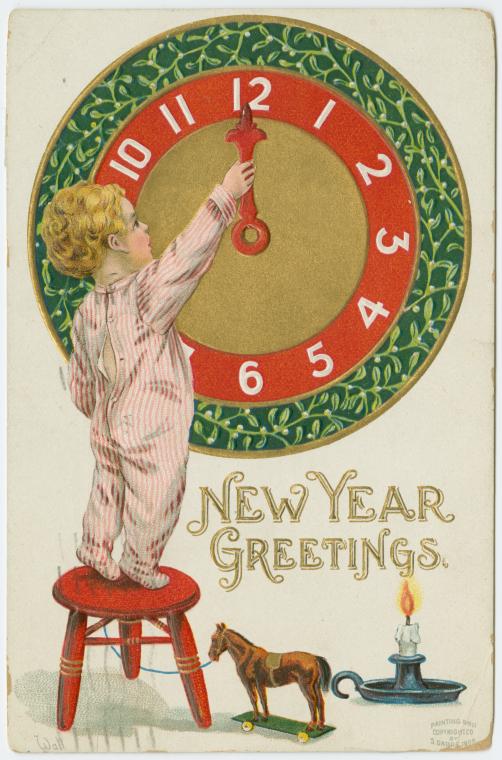December
30, 2015—Boston, Massachusetts— To assist family historians of all levels with
ambitious New Year’s resolutions, New England Historic Genealogical Society
(NEHGS) is granting free access from Wednesday, December 30, 2015, through
Sunday, January 31, 2016, to historic vital records from Massachusetts, New
Hampshire, and Vermont which will be available for unlimited access during the
entire month after registering for a free account. NEHGS, the most respected
name in family history, has also assembled a quick guide to resources,
services, and staff expertise to fulfill any genealogist’s resolutions to grow
the ancestral family tree in the New Year.
Family
historians can start fulfilling their New Year’s genealogy resolutions with
NEHGS by visiting AmericanAncestors.org/2016.
NEHGS Can Fulfill Your Resolution
Aware
of the desire by many individuals to begin the study and documentation of one’s
family history in the New Year, NEHGS has many resources and services to assist
a genealogist at any level of research and publishing. The Online
Learning Center on
AmericanAncestors.org offers a complete program of instructional resources to
guide both the beginner and the more advanced. In addition, the consultation
services and research services divisions within NEHGS provide excellent ways to
obtain expert guidance and solutions to the frustrating and mysterious “brick
walls” that inevitably appear along the journey of researching ancestral roots.
And, the calendar of guided research tours and heritage tours offered during
2016 by NEHGS provides many opportunities for the ambitious and passionate
genealogist to participate in intensive days devoted to research, one-on-one
consultations, presentations by NEHGS genealogists and local experts, and
social activities.
Free Databases This Month
The
vital records on AmericanAncestors.org is
a collection of valuable information regarding births, marriages, and deaths
and is an essential resource for researching ancestral connections. Databases
available for unlimited access this entire month after registering for a free
account include:
From
original records held by the Massachusetts Archives, these vital records cover
the years 1841-1910. The vital records cover births, marriages, and deaths that
occurred in Massachusetts
This
database contains the records of births and marriages to 1901, and deaths and
marriages to 1937, as filed with the state of New Hampshire
This
database contains the records of births, marriages and deaths to 2008, as filed
with the state of Vermont
Registration
is required at AmericanAncestors.org as
a FREE Guest User to gain access to these valuable resources.
Guest User accounts allow web visitors to use a limited suite of
AmericanAncestors.org databases and access web content such as making purchases
from the online store. Unlimited access to more than 1 billion records and to
other benefits is available through membership at NEHGS.
(Image
caption) Throughout the entire first month of the New Year, NEHGS is offering
FREE access to a popular part of its collection of vital records for Massachusetts , New Hampshire ,
and Vermont
~~~~~~~~~~~~~~~~~~~~
copyright © National
Genealogical Society, 3108 Columbia Pike, Suite 300, Arlington, Virginia
22204-4370. http://www.ngsgenealogy.org.
~~~~~~~~~~~~~~~~~~~~~
NGS does not imply
endorsement of any outside advertiser or other vendors appearing in this blog.
Any opinions expressed by guest authors are their own and do not necessarily
reflect the view of NGS.
~~~~~~~~~~~~~~~~~~~~~
Republication
of UpFront articles is permitted and encouraged for
non-commercial purposes without express permission from NGS. Please drop us a
note telling us where and when you are using the article. Express written
permission is required if you wish to republish UpFront articles
for commercial purposes. You may send a request for express written permission
to UpFront@ngsgenealogy.org. All republished articles may not be
edited or reworded and must contain the copyright statement found at the bottom
of each UpFront article.
~~~~~~~~~~~~~~~~~~~~~
Think your friends,
colleagues, or fellow genealogy researchers would find this blog post
interesting? If so, please let them know that anyone can read past UpFront with NGS posts or subscribe!
~~~~~~~~~~~~~~~~~~~~~
Suggestions for
topics for future UpFront with NGS posts are always welcome. Please send
any suggested topics to UpfrontNGS@mosaicrpm.com
~~~~~~~~~~~~~~~~~~~~~
Unless indicated
otherwise or clearly an NGS Public Relations piece, Upfront with NGS posts are written by Diane L Richard, editor, Upfront with NGS.
~~~~~~~~~~~~~~~~~~~~~
Want to learn more
about interacting with the blog, please read Hyperlinks,
Subscribing and Comments -- How to Interact with Upfront with NGS Blog posts!
~~~~~~~~~~~~~~~~~~~~~











